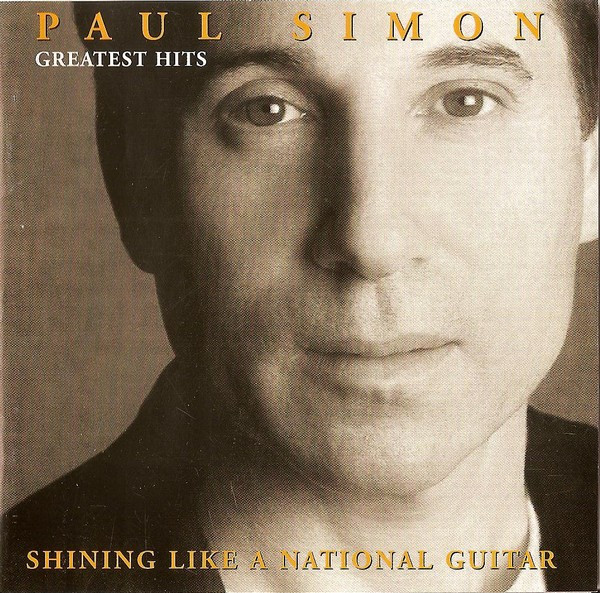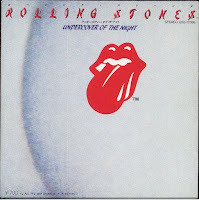Paul Simon: Shining Like A National Guitar: Greatest Hits

Paul Simon is just such a clever, sensitive, observational individual and he has been one of music's major singer/songwriters for many a decade. Now retired, his contribution has simply been immense. He has been one of the greats. No question.
I have reviewed all his solo albums in detail - click on the blue label link at the bottom of this page.
If you just require a sampler then let me take you to the Mardi Gras......
We begin with two of the big eighties hit tunes - Graceland, where Simon sings about Elvis Presley’s house against a wonderful South African township guitar riff and You Can Call Me Al, which includes legendary bassist Ray Phiri’s famous “backwards” bass solo part.
Then it's back to the early seventies with the convincing reggae experiment of Mother And Child Reunion. Not all non-Jamaican musicians could play reggae well, but Simon's band managed it., maybe surprisingly. I remember the song from the time of release. It was a big hit.
The Cool, Cool River, from 1990's Rhythm Of The Saints album is just so marvellously evocative, particularly when those Heaven-bound horns kick in again - "send their battered dreams to Heaven...". 50 Ways To Leave Your Lover, from 1975, is an addictively rhythmic and catchy song that became one of his biggest hits. It is a tad annoying, I have to admit.
Simon's world music interest is perfectly utilised and exploited in the whole troop of drummers from the Bahía region of Brazil that feature so wonderfully on the upbeat opener to The Rhythm Of The Saints album, The Obvious Child.
The Boy In The Bubble, with its atmospheric opening lines - “It was a slow day and the sun was beating on the soldiers by the side of the road” - is a fine, atmospheric and catchy track from 1986's Graceland. Simon’s lyrics always say so much in so few lines. All the songs on that album do this. I could go on quoting all day.
Rene And Georgette Magritte With Their Dog After The War is one of my favourite song titles, and the song is duly pictorial in its lovely images and plaintive delivery. It is a truly fine song. I love the bit where Simon changes the lyrics to “apres la guerre...”.
Late In The Evening is a bone fide Simon classic, full of that quintessential Simon je ne sais quoi. You just know it when you hear it. The rhythms are totally intoxicating from beginning to end as are Simon’s beguiling, cinematic and enigmatic (at one point drug-referencing) lyrics. As for the brass section and the percussion solo - wow. I haven’t even mentioned the guitar either. The song is just an unbridled joy.
Bernadette, from 1997's Songs From The Capeman is possibly the best-known track from its lesser-known album. Again, it is full of rock 'n' roll idioms, vocals, instrumentations and an effervescent, lively melody. Slip Slidin' Away, recorded during the 1975 Still Crazy After All These Years album's sessions, surely should have been included on the eventual album. God knows why it wasn't - it's great. Everyone knows it now too.
Now comes one of my favourites, one of my all-time best songs of Simon's - the wonderfully atmospheric groove of Take Me To The Mardi Gras. I remember first hearing this as a young teenager, fourteen I think, one hot day in May 1973 on my tiny transistor radio and I was just entranced. I can still remember that moment. Paul Simon's voice, the effortless instrumental sound, and, of course that thoroughly addictive New Orleans brass sound at the end.
Diamonds On The Soles Of Her Shoes is a quintessential township shuffle from Graceland, chock full of rhythm and atmosphere. It has an effortless soul to it that I love but can't properly describe. I just know what I mean!
The gentle, subtle and wise Still Crazy After All These Years is a reflective piece, well-known to everyone by now. Kodachrome is a lively, energetic number from 1973. Its sound is pretty much typical Simon, and its intriguing lyrics too. Loves Me Like A Rock is instantly recognisable as Simon whoops it up with a gospel choir - and it's another track that will always be referenced by many as archetypal Paul Simon.
There are infectious Caribbean calypso-style rhythms and "world music" sounds on Me And Julio Down By The Schoolyard, another 1972 number like Mother And Child Reunion that saw Simon experimenting with different sounds.
Perhaps even more archetypal Simon are the subtle strains of Hearts And Bones with its quiet melody and pre-Rhythm Of The Saints lyrics, particularly the first verse. Once again, it is a most impressive and atmospheric song. Released in 1983, it ends with the sort of tribal drum sound that Simon would use a lot by the end of the decade.
This album ends with Trailways Bus, which is another that sounds very much like the songs on The Rhythm Of The Saints. Again, it is a most atmospheric song. From Songs From The Capeman, it seems to tell the tale of the album's main character, Agron, free from incarceration, and travelling on a bus. It could be Agron but it could be anyone. It is just an atmospheric song.
This has been a fine, enjoyable journey but as with many such noted artists, it barely scratches the surface, does it?








Comments
Post a Comment